4 Must-Know Forex Trading Strategies



Editorial Note: While we adhere to strict Editorial Integrity, this post may contain references to products from our partners. Here's an explanation for How We Make Money. None of the data and information on this webpage constitutes investment advice according to our Disclaimer.
4 types of Forex trading strategies that you must know are:
Successful Forex trading relies on flexibility and adapting to market changes. Expert traders mix different trading styles and strategies to match the market. This article covers four common trading styles and essential Forex strategies that work well together. Whether you use visual, analytical, intuitive, or algorithmic methods, you can combine these styles to choose the best strategies for the market.
Must-Know Forex trading strategies
Trading strategies are specific techniques or plans used to execute trades within the chosen trading style. Some common trading strategies include:
Trend Following: This strategy involves trading in the direction of the market trend. Traders use indicators like moving averages, trend lines, and momentum indicators to confirm and follow trends.
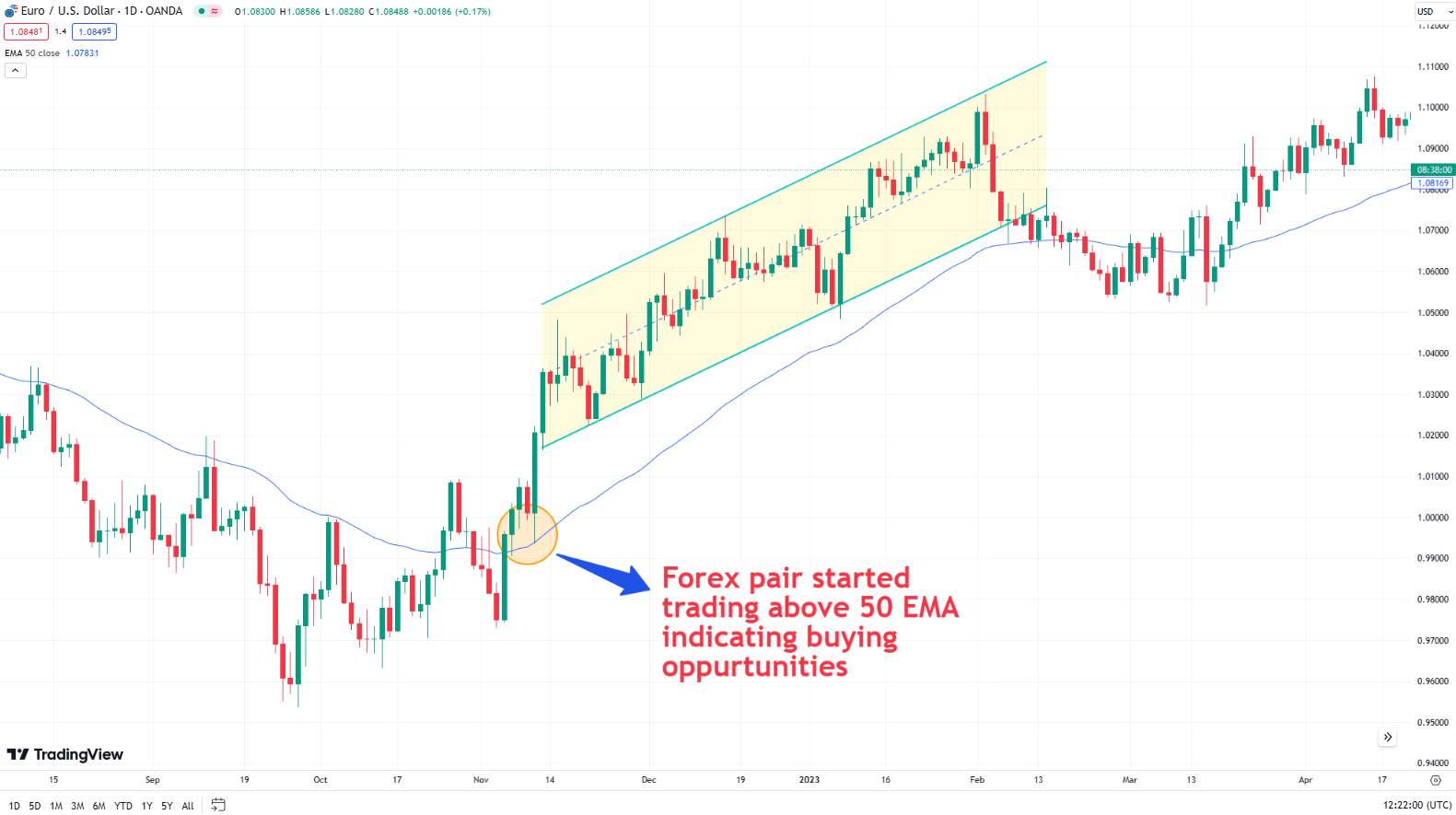
Counter-Trend: This strategy involves trading against the current market trend, aiming to profit from potential reversals. Traders look for overbought or oversold conditions, divergence, and reversal patterns.
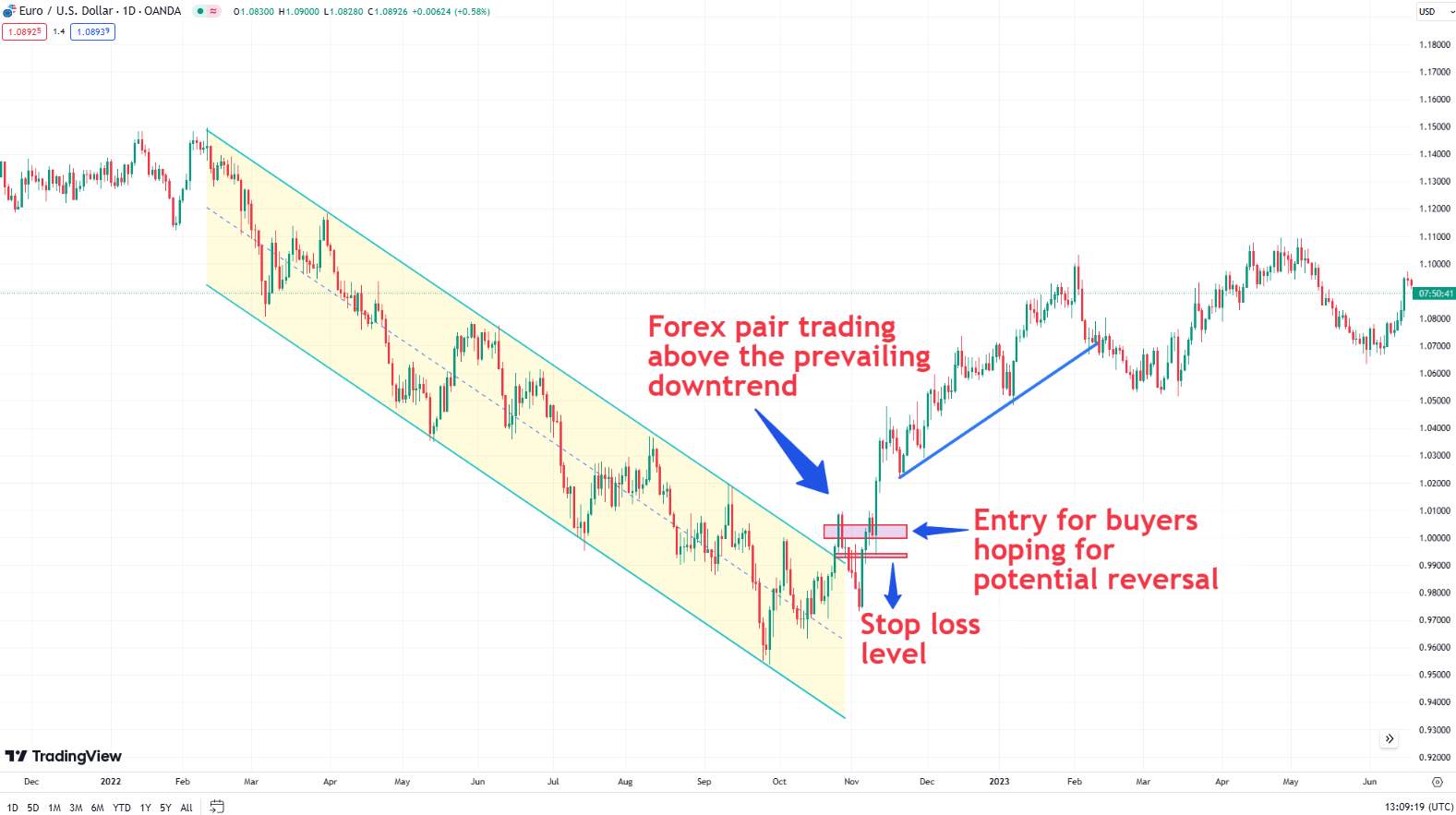
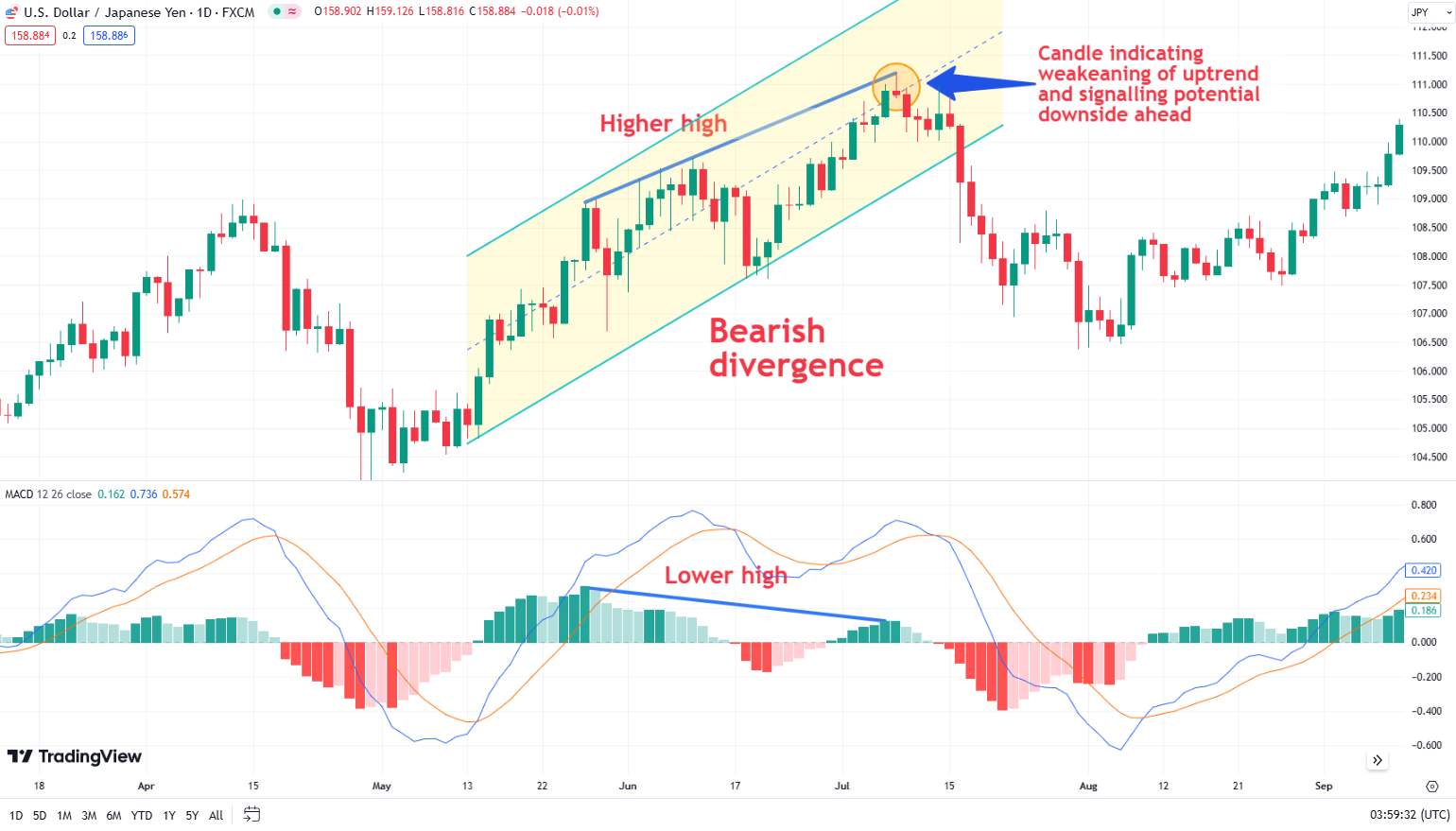
Breakout Trading: Breakout traders identify key levels of support or resistance and enter trades when the price breaks through these levels. They use tools like Bollinger Bands, pivot points, and volume indicators.
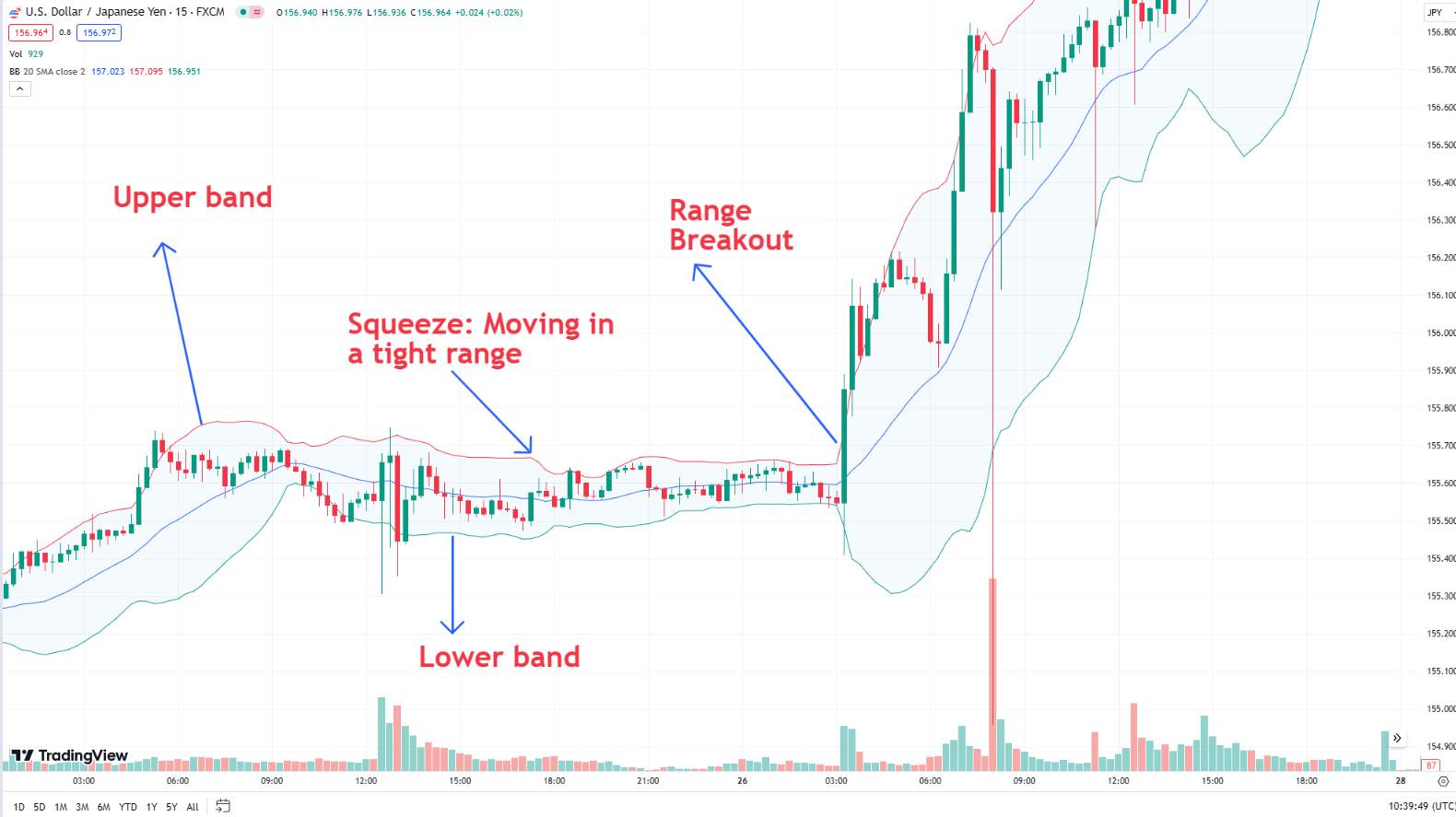
Range Trading: This strategy is used when markets move sideways within a defined range. Traders buy at the support level and sell at the resistance level, using indicators like RSI, stochastic oscillators, and price channels.
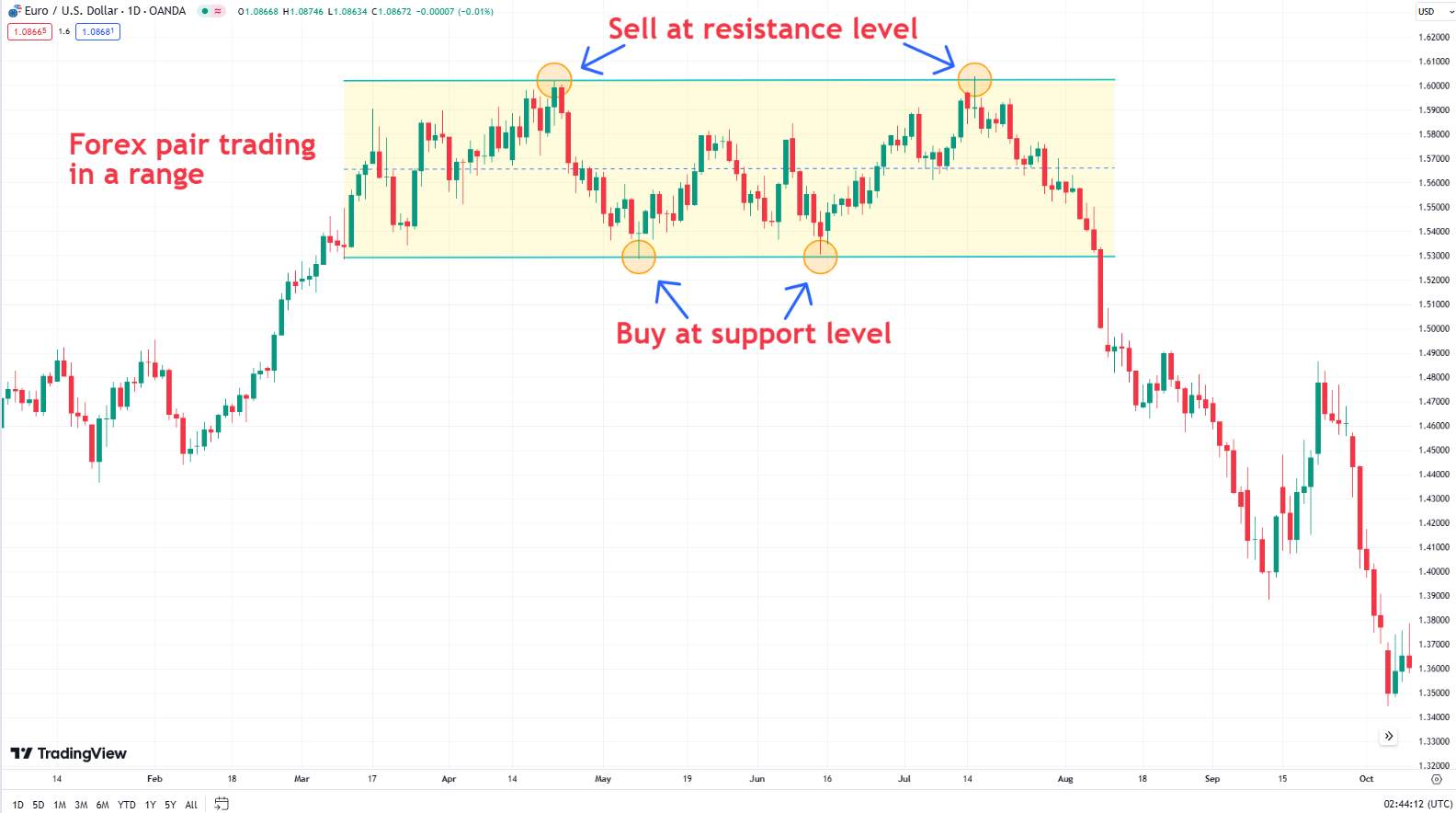
Forex trading styles
Trading styles refer to the overall approach or philosophy a trader adopts to execute trades. These styles are defined by the trader's time commitment, risk tolerance, and market engagement. Some common trading styles include:
Scalping: Involves making numerous short-term trades to capture small price movements. Scalpers hold positions for seconds to minutes and aim for quick profits with minimal risk. A trader notices a small but consistent price movement in EUR/USD during high volatility periods. They make multiple trades, each lasting a few minutes, capturing small profits from each trade. Using tight stop-loss orders, they aim to accumulate gains while minimizing losses.
Day trading: Traders buy and sell financial instruments within the same trading day, avoiding overnight positions. The goal is to capitalize on intraday price movements. A trader spots an opportunity in GBP/USD due to a significant economic announcement expected during the day. They buy and sell within the same day, reacting quickly to price changes triggered by the news, aiming to capitalize on short-term volatility.
Swing trading: This style involves holding positions for several days to weeks. Swing traders aim to profit from short- to medium-term price trends. Observing a bullish trend in AUD/JPY, a trader holds a position for several days, expecting the trend to continue based on technical indicators like moving averages and RSI. They aim to profit from the trend's momentum before closing the trade when signs of reversal appear.
Position trading: Position traders hold trades for weeks, months, or even years. They focus on long-term market trends and fundamental analysis. A trader believes that USD/CAD will strengthen over the next few months due to expected interest rate hikes by the Federal Reserve. They open a long position, planning to hold it for several months, analyzing economic reports and geopolitical events to confirm their long-term outlook.
How to blend and mix Forex trading styles and strategies?
Blending and mixing Forex trading styles and strategies involves integrating different approaches to create a comprehensive trading plan that suits your trading goals and risk tolerance. Here’s how you can effectively combine various styles and strategies:
Identify your trading style: Determine if you prefer short-term (scalping, day trading), medium-term (swing trading), or long-term (position trading) approaches. This will help you select compatible strategies.
Choose complementary strategies: Combine strategies that align with your trading style. For example, you can mix technical analysis (using indicators like moving averages, RSI, or MACD) with fundamental analysis (considering economic news, interest rates, or geopolitical events) to gain a well-rounded perspective.
Diversify time frames: Use multiple time frames to get a broader view of market trends. For instance, a day trader might use hourly charts for entries and exits while keeping an eye on daily charts for overall market direction.
Incorporate risk management: Apply consistent risk management across all strategies. This includes setting stop-loss orders, position sizing, and managing leverage to protect your capital.
Backtesting and analysis: Test your blended strategies on historical data to evaluate their performance and tweak them as necessary. This helps you identify which combinations work best under different market conditions.
Adaptability and flexibility: Be prepared to adapt your blended strategies based on changing market conditions or personal circumstances. This could involve shifting focus between strategies or adjusting risk parameters.
Continuous learning: Stay updated with new trading techniques and market developments. Learning from other traders and incorporating new strategies can enhance your blended approach.
Monitoring and adjustment: Regularly review your performance and strategies to identify strengths and weaknesses. Adjust your approach based on these insights to improve your trading outcomes.
By combining different Forex trading styles and strategies, you can create a more robust and flexible trading plan that maximizes opportunities and minimizes risks.
How to choose a trading strategy or trading style
Finding the right trading strategy or style means knowing yourself and understanding the market. Here's what you should think about:
Time commitment: How much time can you actually spend trading? Scalping and day trading need you to watch the market closely and make quick decisions, which works if you have a few hours every day to trade. Swing and position trading don't need as much constant attention, so they're better if you have other things to do.
Risk tolerance: How much risk are you comfortable with? Scalping and day trading can be risky because they involve frequent trades. If you want to take it slow and steady, swing or position trading might be better.
Trading capital: How much money do you have to trade with? Scalping and day trading might need more money due to frequent trades and costs. Position trading, which involves holding onto stocks for longer, might need more capital to handle any potential losses.
Market knowledge and experience: How well do you know the market? If you're new, swing or position trading might be easier since they're slower-paced. If you're experienced, you might like the fast action of scalping and day trading.
Personality and lifestyle: Your personal style matters. If you like high-pressure and fast-paced environments, scalping and day trading might be your thing. If you prefer a laid-back approach, go for swing or position trading.
Market conditions: Be ready to change your trading style based on the market. Trend-following strategies work when the market is moving in one direction, while range-bound strategies are good for stable markets. Flexibility is key.
Technical and fundamental analysis: Do you like using charts and indicators (technical analysis) or focusing on economic news (fundamental analysis)? Technical analysis is crucial for scalping and day trading, while fundamental analysis is important for swing and position trading.
Strategy testing and backtesting: Before you fully commit to a strategy, try it out on a demo account or through backtesting. This way, you can see how it performs in different market conditions and ensure it fits your goals and risk tolerance.
We have analyzed several brokers to help you to explore trading strategies and trading styles. And here are their primary conditions:
| Demo | Min. deposit, $ | Max. leverage | Min Spread EUR/USD, pips | Max Spread EUR/USD, pips | Open account | |
|---|---|---|---|---|---|---|
| Yes | 100 | 1:300 | 0,5 | 0,9 | Open an account Your capital is at risk. |
|
| Yes | No | 1:500 | 0,5 | 1,5 | Open an account Your capital is at risk.
|
|
| Yes | No | 1:200 | 0,1 | 0,5 | Open an account Your capital is at risk. |
|
| Yes | 100 | 1:50 | 0,7 | 1,2 | Study review | |
| Yes | No | 1:30 | 0,2 | 0,8 | Open an account Your capital is at risk. |
Difference between Forex trading styles and Forex strategies
While trading styles set the overall approach and framework for trading, strategies provide the detailed, actionable plans traders use to navigate the markets and achieve their trading goals. Understanding both concepts and how they interact is essential for developing a comprehensive and effective trading plan.
Scope and focus: Trading styles are broader approaches to conducting trades over different time frames and market conditions. Trading strategies are more specific, detailing the exact methods and rules for making trades within the framework of the chosen trading style.
Time frame: Trading styles define the general time horizon for trades (short-term, medium-term, long-term), while strategies provide the exact entry and exit points based on the analysis of price movements and indicators.
Adaptability: A trader can use multiple strategies within a single trading style to adapt to market conditions. For instance, a day trader might use breakout and range strategies depending on the market environment.
Risk management: Trading styles often imply a certain level of risk tolerance and engagement, while strategies offer concrete methods for managing risk, such as setting stop-loss orders and position sizing.
Strengths and challenges of Forex trading styles and strategies
I've explored various trading styles and strategies to find what works best in different market conditions. Here, I'll share my insights on four primary trading styles and four must-know strategies that have proven effective over time.
Each trading style and strategy has its own strengths and challenges. By understanding and mastering them, I can adapt to different market conditions and enhance my trading performance.
Summary
Trading styles and trading strategies are key concepts in Forex trading, each serving distinct purposes. Trading styles, such as scalping, day trading, swing trading, and position trading, define how traders engage with the market based on the duration of holding positions and engagement levels. Scalping targets quick, small profits, day trading focuses on intraday movements, swing trading aims for short- to medium-term trends, and position trading targets long-term trends.
Trading strategies are specific methods used within these styles to execute trades. Trend following profits from market trends, counter-trend trading anticipates reversals, breakout trading captures movements through key levels, and range trading benefits from predictable price movements within a range.
Understanding the differences between trading styles and strategies is crucial for developing an effective trading plan that suits individual risk tolerance and market outlook.
FAQs
How many Forex strategies are there?
There are hundreds of Forex trading strategies, and the number continues to grow as traders create new methods.
What is the most effective strategy in Forex trading?
There isn't a single "most effective" strategy; effectiveness depends on the trader's goals, risk tolerance, market conditions, and skill level.
Is there a 100% winning strategy in Forex?
No, there is no 100% winning strategy in Forex trading. All strategies involve some risk and potential losses.
What is the safest Forex strategy?
The safest strategies prioritize capital preservation and risk management. Swing trading and position trading are often considered safer due to more extended holding periods and larger stop-loss orders.
Related Articles
Team that worked on the article
Mikhail Vnuchkov joined Traders Union as an author in 2020. He began his professional career as a journalist-observer at a small online financial publication, where he covered global economic events and discussed their impact on the segment of financial investment, including investor income. With five years of experience in finance, Mikhail joined Traders Union team, where he is in charge of forming the pool of latest news for traders, who trade stocks, cryptocurrencies, Forex instruments and fixed income.
Chinmay Soni is a financial analyst with more than 5 years of experience in working with stocks, Forex, derivatives, and other assets. As a founder of a boutique research firm and an active researcher, he covers various industries and fields, providing insights backed by statistical data. He is also an educator in the field of finance and technology.
As an author for Traders Union, he contributes his deep analytical insights on various topics, taking into account various aspects.
Mirjan Hipolito is a journalist and news editor at Traders Union. She is an expert crypto writer with five years of experience in the financial markets. Her specialties are daily market news, price predictions, and Initial Coin Offerings (ICO).
A long position in Forex, represents a positive outlook on the future value of a currency pair. When a trader assumes a long position, they are essentially placing a bet that the base currency in the pair will appreciate in value compared to the quote currency.
Forex indicators are tools used by traders to analyze market data, often based on technical and/or fundamental factors, to make informed trading decisions.
Volatility refers to the degree of variation or fluctuation in the price or value of a financial asset, such as stocks, bonds, or cryptocurrencies, over a period of time. Higher volatility indicates that an asset's price is experiencing more significant and rapid price swings, while lower volatility suggests relatively stable and gradual price movements.
A day trader is an individual who engages in buying and selling financial assets within the same trading day, seeking to profit from short-term price movements.
An investor is an individual, who invests money in an asset with the expectation that its value would appreciate in the future. The asset can be anything, including a bond, debenture, mutual fund, equity, gold, silver, exchange-traded funds (ETFs), and real-estate property.






























































































































